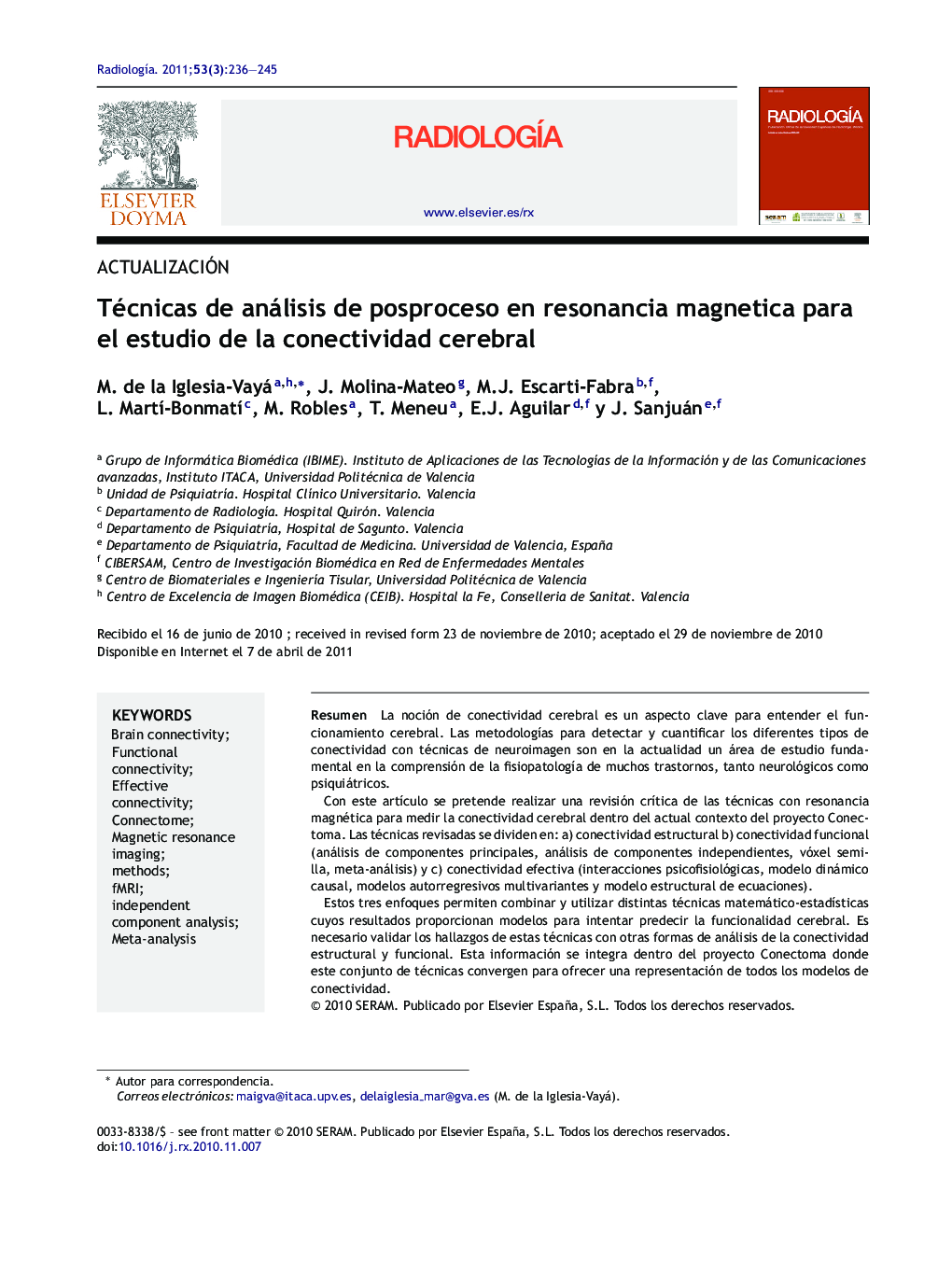| Article ID | Journal | Published Year | Pages | File Type |
|---|---|---|---|---|
| 4245643 | Radiología | 2011 | 10 Pages |
ResumenLa noción de conectividad cerebral es un aspecto clave para entender el funcionamiento cerebral. Las metodologías para detectar y cuantificar los diferentes tipos de conectividad con técnicas de neuroimagen son en la actualidad un área de estudio fundamental en la comprensión de la fisiopatología de muchos trastornos, tanto neurológicos como psiquiátricos.Con este artículo se pretende realizar una revisión crítica de las técnicas con resonancia magnética para medir la conectividad cerebral dentro del actual contexto del proyecto Conectoma. Las técnicas revisadas se dividen en: a) conectividad estructural b) conectividad funcional (análisis de componentes principales, análisis de componentes independientes, vóxel semilla, meta-análisis) y c) conectividad efectiva (interacciones psicofisiológicas, modelo dinámico causal, modelos autorregresivos multivariantes y modelo estructural de ecuaciones).Estos tres enfoques permiten combinar y utilizar distintas técnicas matemático-estadísticas cuyos resultados proporcionan modelos para intentar predecir la funcionalidad cerebral. Es necesario validar los hallazgos de estas técnicas con otras formas de análisis de la conectividad estructural y funcional. Esta información se integra dentro del proyecto Conectoma donde este conjunto de técnicas convergen para ofrecer una representación de todos los modelos de conectividad.
Brain connectivity is a key concept for understanding brain function. Current methods to detect and quantify different types of connectivity with neuroimaging techniques are fundamental for understanding the pathophysiology of many neurologic and psychiatric disorders.This article aims to present a critical review of the magnetic resonance imaging techniques used to measure brain connectivity within the context of the Human Connectome Project. We review techniques used to measure: a) structural connectivity b) functional connectivity (main component analysis, independent component analysis, seed voxel, meta-analysis), and c) effective connectivity (psychophysiological interactions, causal dynamic models, multivariate autoregressive models, and structural equation models).These three approaches make it possible to combine and use different statistical techniques to elaborate mathematical models in the attempt to understand the functioning of the brain. The findings obtained with these techniques must be validated by other techniques for analyzing structural and functional connectivity. This information is integrated in the Human Connectome Project where all these approaches converge to provide a representation of all the different models of connectivity.
